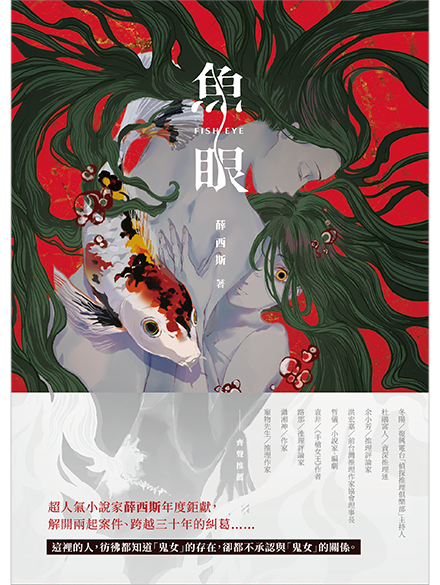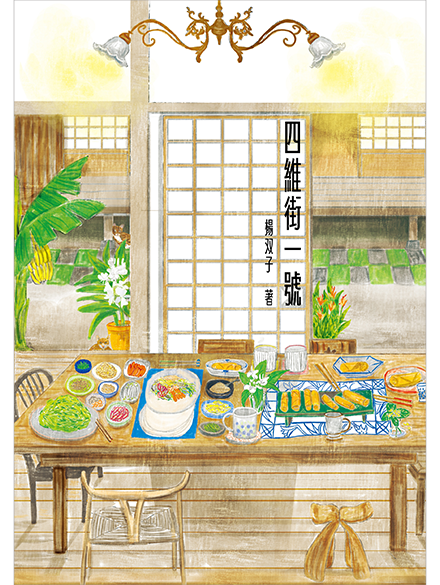Are you familiar with Plato’s Cave? People in a dark cave discuss the shadows that firelight projects onto a wall and are convinced they are real, when in fact reality can only be reached by facing the flames, leaving the cave, and experiencing pain. Inspired by this allegory, novelist Chiou Charng-Ting tells the story of an epic journey of two brothers between a shadow world and the real world.
Like the firelit images on the wall, the shadow world is entirely an imitation of the real world. This is the starting point for the author’s fantasy worldbuilding, with analogues for Taiwan and China, Han and Indigenous peoples, power and oppression, transgender issues, incest, environmental destruction, extinction, and the craft of fiction. Its sumptuous literary feel is spiced with the genre flavor of fantasy: magic here is called “mimesis” (the pronunciation of the two terms is similar in Chinese), and the abilities of magicians – “mimesists” – emanate from “believing the world is false in order to obtain the greatest mimetic power”. They can raise the dead, summon typhoons, transform gender, and cause pregnancy – nothing short of omnipotence.
In addition to the mimesists, there are other magical beings – beast spirits that can talk – who exist only in the shadow world, born of the love and memories people in the real world have for extinct creatures. There they seek out people chosen by fate and dwell within their spiritual voids, granting contentment and wondrous powers to the sad and lonely and serving as humanity’s eternal animal companions.
Beastosis opens on the Isle of Wan, a stand-in for Taiwan, where five clans under the dominion of the powerful state of Midong rule with ruthless brutality over a destitute people. A pair of brothers, Taibang and Luan, light the fuse of revolt on the island. For the sake of his younger brother, elder brother Taibang refuses his destined union with a clouded leopard spirit, but the witch Utux, a person with a bird spirit bent on provoking a rebellion, needs his power. She schemes to separate the brothers so that Taibang will unite with the clouded leopard and join the revolutionary army. The revolution falters, and when Taibang dies, his bones are carried off by a Midong scholar for display in a foreign museum. However, having foreseen his death, Taibang had entreated the shaman Ivivigi to carve a mimetic totem into his skull bearing blessings that will one day be conveyed to the heart of his still-living younger brother.
Luan is fated for great things but lives a complicated life: his male body houses a woman’s mind and he is in love with Taibang. When Utux separates the two, she commands her underlings to take Luan to safety, but they are waylaid by the golden rooster goddess, the head of the powerful Chin clan, who reveals Luan’s identity as the heir to the Chin family. She cannot permit him anywhere near the five families, so she erases his memory and sends him into exile.
Over the next decade, Luan grows up abroad, his love for his elder brother forgotten, and lives as a woman under the name Lily. In college, she befriends Yasuko, whose subsequent murder puts her on the path to crime. After hunting down and killing the murderer and awakening her mimetic power, she learns that this has been “a mimesist test”. The examiner, using the name Black Antelope, informs Lily that the answers she’s looking for can be found in a foreign museum. There, she finds Taibang’s skull. The sound of his last wish causes her lost memories to return, and she makes a deal with Black Antelope: if he instructs her how to resurrect Taibang, she will infiltrate the five clans on the Isle of Wan so he can play a game with another mimesist called White Ape.
The five clans are embroiled in a storm of their own. Although the revolution failed, it left the clans splintered, and now a series of assassinations have targeted the leadership at the most inopportune moment. Chin heir Chin Hsueh and his bodyguard Liu Amo want to find the assassin, stop the fighting, and rebuild the family fortune, but the ruthless killer is not their only enemy, for a young woman called A-lan is also bent on revenge. The inheritor of Utux’s beast spirit and unrealized final wish, she aims to wipe out the five clans. But she is also searching for a young woman called Wagtail who taught her the meaning of love during her exile but was caught by the Chin family. The assassinations are actually the work of powerful mimesists: White Ape and Black Antelope are using the Isle of Wan as a chessboard to play a fatal game, a grand final chapter before the ultimate destruction of the five clans.
Having told of a revolution against the powerful, murders in foreign lands, family power struggles, a young woman’s vengeance, and a murder game for mimesists, Beastosis transitions to a new phase in which the real world, the source of the shadow world’s imitations, is facing the end of days. As a strange, fatal disease originating in South America sweeps across the globe, a young man named Taibang spends his time writing Beastosis, a story first told by his younger brother Luan. When Luan hanged himself, Taibang’s psychiatrist advised him to use writing as therapy. Then things start to change: as the disease mutates, people’s personalities alter and they shout strange words as they die. The disease attacks Taibang’s tribe, causing feverish children to babble things that only exist in his story. On his bathroom mirror, writing appears in his brother’s hand: FIND ME. The tribe’s shaman Ivivigi tells him that he is the key link between this world and the other, where Luan is calling out to him. The mirror writing and backward music are clues he uses to guide Taibang on a great journey.
That journey ends on the icy surface of a frozen lake, a magic mirror that shows him two faces. One is a grown-up Luan – Lily in the shadow world – and the other is Luan at the age of eight, wreathed in green flame like a mythical malevolent spirit. It turns out that Luan, foreseeing the extinction of the human race, used suicide as a means of reaching the shadow world and had not only guided Taibang but had abducted Lily – and with her the power to restore life she had learned from Black Antelope. After Lily’s resurrection of Taibang left him with an incomplete soul, an evil spirit convinced her that a mirror could make him whole – but that mirror is actually a portal between the two worlds. By killing the shadow world Taibang and separating the real world Taibang from his flesh, his body would bestow new life on anyone who acquired. Lily does not want Taibang to die and fights with the evil Luan. The clouded leopard that vanished ten years ago after the revolution manifests and reveals it is the vessel for Taibang’s spirit.
Meanwhile, Black Antelope’s motive for seeking out Lily’s assistance in his games with White Ape was to stem his string of losses and gain the upper hand to force White Ape to reveal himself. As children, Black Antelope and White Ape were inseparable friends under the tutelage of Red Phoenix, Midong’s most powerful mimesist and master of the phoenix spirit’s power of eternal life. A failed mimesis trial drove White Ape mad, and when Black Antelope was tasked with traveling on missions, the two gradually drifted apart. Over time, Black Antelope’s observations of Red Phoenix revealed his secret scheme: probing the extremes of mimetic power, he believed the ultimate mystery could be found in the real world, and although the access mirror was in his possession, among the many conditions for passage was the need for a special body. His worldwide search had turned up just one suitable candidate – White Ape – and so he infiltrated his soul into White Ape’s body and waited for the opportune moment. Sensing something amiss on the Isle of Wan, Black Antelope realizes that White Ape’s broken mind has been invaded, and he follows him back to Midong with the aim of battling the mimesist who has taken control of his body to reach the real world.
The novel reaches a climax with a duel between brothers and a battle between mimesists across the real and illusory worlds, and Black Antelope and White Ape ultimately reunite to defeat Red Phoenix, losing their lives in the process. Evil Luan at last steps back and bids his elder brother farewell. Although young Taibang is unable to stop the extinction of humanity, the beast spirits will eternally preserve the souls of those in union with them, pointing the way to the next step in human evolution.
The denouement is wistful but not sad. The ensemble cast may appear complicated, but it’s all in the service of a simple goal, to depict a boy unable to accept a loved one’s absence, who straddles real and imaginary worlds to turn death to life. Mimesists in the shadow world are like gods who pass the time playing games with human emotions and desires. This is an adventure on a magnificent scale: the unknowns of the shadow world are ripe for exploration, while the real world offers up the evolved species of the future. But at the same time, this is a story of rich emotions in which beast spirits born of the love and memories people have for the departed give the mimetic world its shape, where the dead are reborn, and where every character fights for the love they hold in their heart. The metaphor of the shadow world is the relationship between story and reality: story responds to and creates reality. And fiction, so long as it produces meaning and emotion in the reader, is eternal truth.







